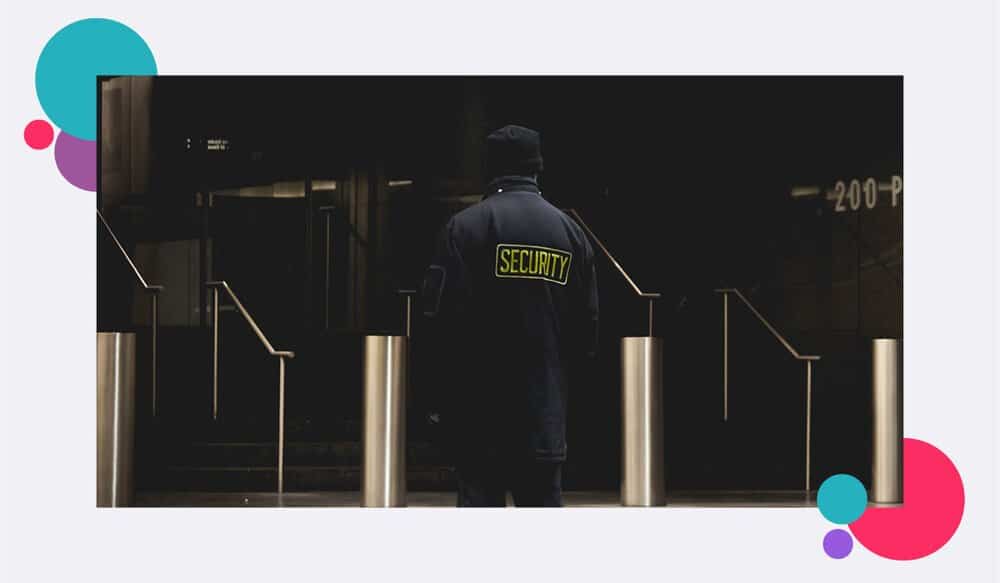
Health and safety is part of the job for people working in the security sector. In many cases, a security worker is working to protect people and property, but their own safety is also of vital importance.
Whether a security employee is working at a pub or club as a door supervisor, patrolling a site like a warehouse or an office after hours, providing oversight at a supermarket, or working the rounds at an event, security guards often work alone and with notable risk factors.
In 2022, the private security sector employed over 300,000 people in the UK –including 218,200 security guards. Major employers include Securitas and G4S, but the industry is largely made up of many smaller organisations, as well as in-house employees.
Many security guards (among other security personnel) are classed as lone workers. This means they spend some or all of their time working alone, outside the eye or earshot of a colleague. This is important because lone workers are at greater risk of aggression, abuse and injury, and are less able to receive support in an emergency.
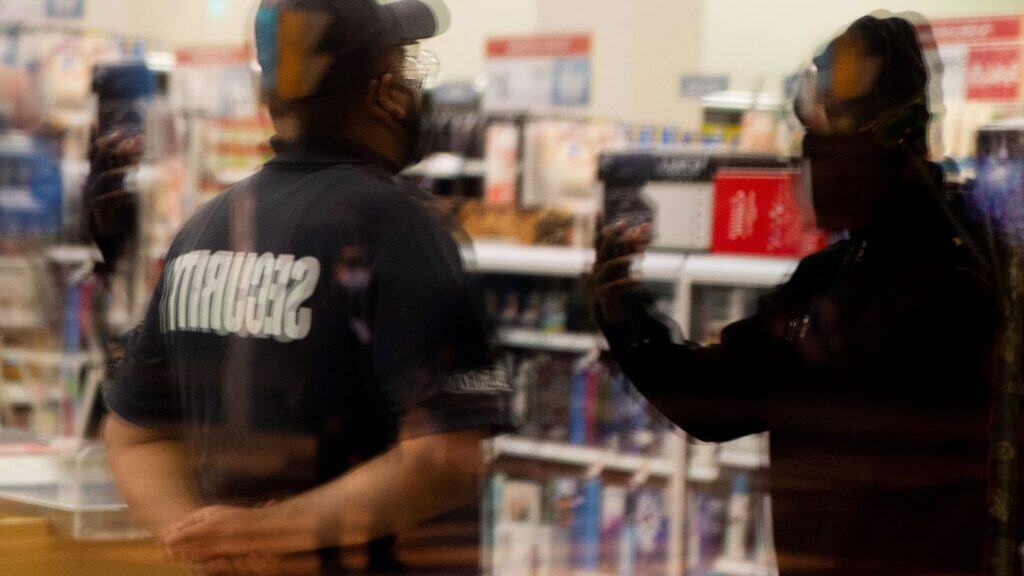
Different security personnel will experience different levels of risk depending on the type of work they do. Whatever the role or venue, however, risks are always a part of a security worker’s job –and the most common risk is physical violence.
According to a study by Working the Doors, 90% of UK-based security personnel have been physically attacked while at work. What’s more, 2/3 of those interviewed said that they are attacked at least once a month. 4% experienced physical attacks every time they are at work.
Risks can include:
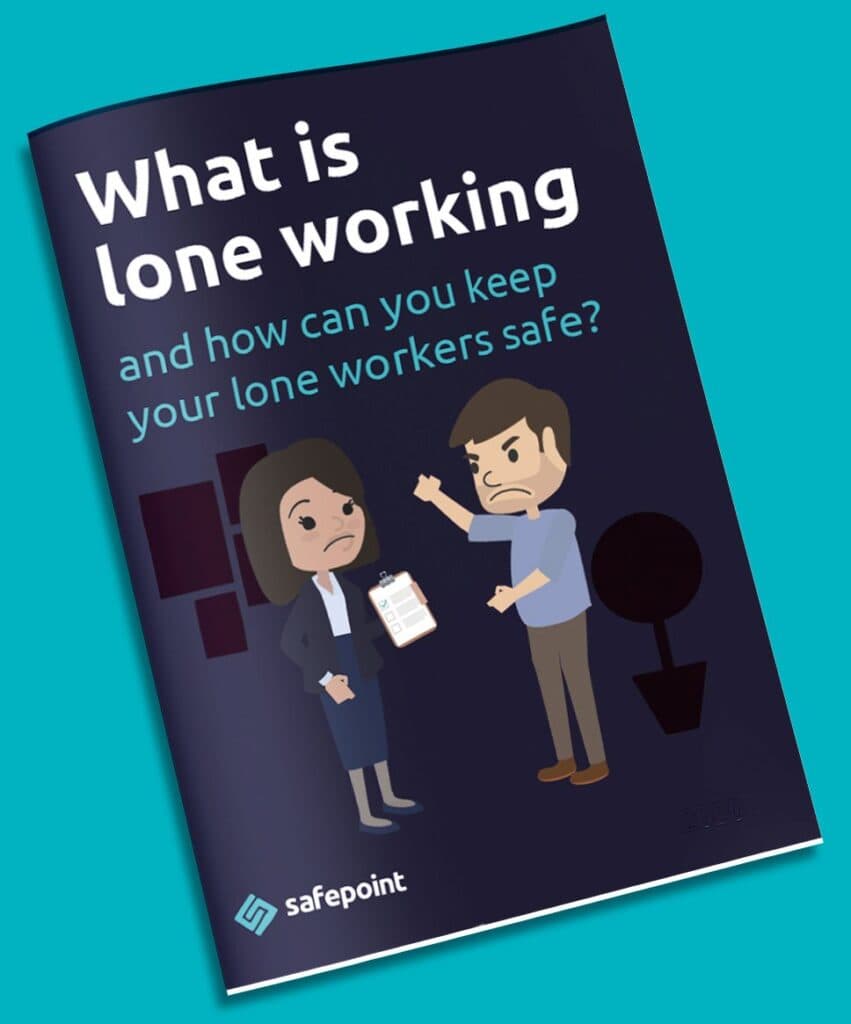
In the security sector, responsibility is multi-faceted and must be shared by both organisations and employees. While security companies have a legal and moral obligation to safeguard and protect their employees, lone workers in the security sector also have a duty of care towards themselves, and the members of the public they interact with. The very nature of security work often means close protection of individuals or groups, especially when doing door service or working an event.
Employers also have a responsibility to ensure that all their lone workers are vetted, fit for work, and given the right provisions to do their work to the best of their abilities. The potential fallout of an error can be great, and so taking responsibility across the organisation is key.
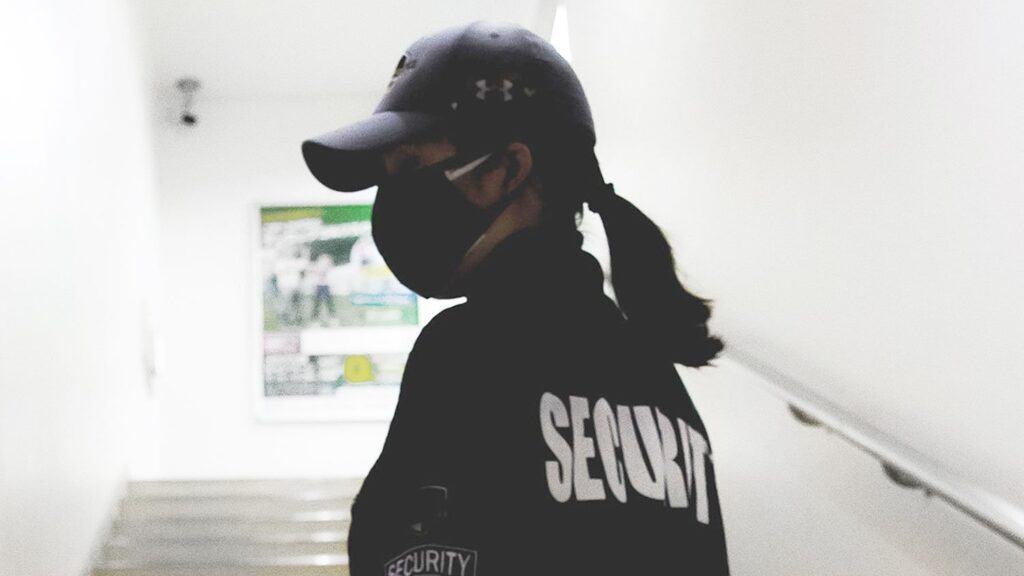
If a security employee is working alone (perhaps as a door supervisor, or as an overnight guard) they must have access to supervision and support. Non-emergency support may be given easily via a phone or walkie-talkie call but emergency support may be more difficult.
As an employer, it is your responsibility to assess the risks posed by having your security personnel work alone, and to put in place measures that will keep those personnel safe. Some roles may not be appropriate for lone working, but for most, it’s about assessing hazards, and mitigating risk. We will explain more in the next section.
Risk assessments for security organisations are vital in determining if a security task can be safely performed alone and if so, what control measures should be put in place.
Your risk assessments should be comprehensive and utilise the expertise of your frontline security personnel. Or, in other words, speak to your staff! See what risks they face and what hazards they’ve encountered. Be mindful though, that not all staff may want to talk about risks and instead might be disdainful of “health and safety” talks, so it is worth seeing their workplace for yourself.
When considering lone working, you don’t need to necessarily create a separate risk assessment. Instead, you can write your lessons into your existing one. However, if lone working is a considerable risk in your business, it might be worth having the risks and best practices separate to make it easy for your staff to read up on.
Dynamic risk assessments rely on training and encouraging staff to spot risks for themselves and suggest what steps can be taken to mitigate them. Security work is changeable and hard to predict by nature – giving your security lone workers the tools necessary to identify, measure and respond to risk as it develops can be the difference between avoiding an incident and seeing issues. To learn more, head to our Dynamic Risk Assessments overview.
It may sound obvious, but the best way to lower the risk of lone working is to work in pairs or teams. There are certain roles which the UK’s Health and Safety Executive say cannot be performed alone (such as working in a confined space), but for this sector, it should really be on a case-by-case basis.
For example, many door supervisors now work in pairs or small teams because they face a risk of being outnumbered or coming up against more than they can handle by themselves. In this way, support from a colleague can both improve a worker’s physical safety and can lower the mental/emotional stresses of the role.
Security guards and other security personnel often work alone, sometimes working in remote locations. In this way, it’s important for the worker to be able to stay in touch with their teams in non-emergency situations (such as asking for advice), and during emergencies (where the worker may not even be conscious or able to physically call for help)
There are various low-fi ways of communicating with lone workers which work fine in non-emergencies but which may not work in emergency situations.
So what if a security worker is attacked while on the job? For people working an overnight shift in an empty office –or even someone working the door of a club– shouting out may do no good. Hopefully, the worker will be able to use their walkie-talkie to call for help, and these are definitely a vital part of the job.
But what if the worker is knocked unconscious, or their equipment is broken, or they are otherwise rendered unable to call for help via radio or phone? This is where automated lone worker systems come in.
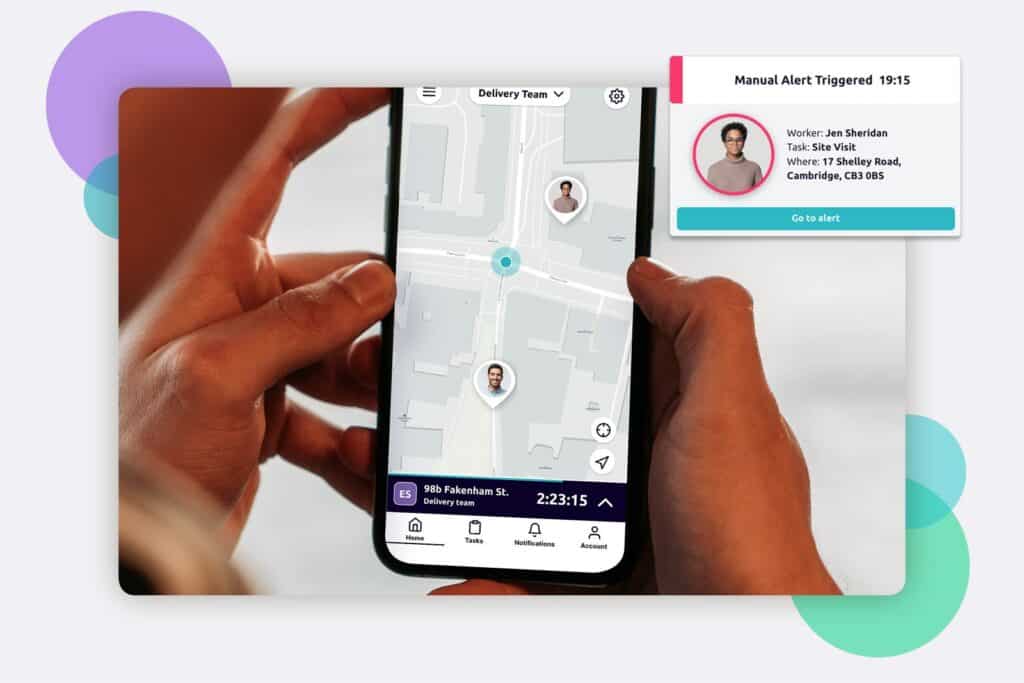
With an automated system, like Safepoint, lone workers can set up timed tasks (such as “Inspecting the main office – 1 hour”) which can be easily monitored via live GPS.
If, at any point, a security worker takes a fall, feels they are under threat, or simply ‘times out’ then an automatic alarm will be raised, letting their team know that there might be a problem they need to inspect.
The team’s supervisors can then look on their Safepoint App and see where the employee is, what they were working on, and a whole host of other information. The supervisors can then use that information to make a swift, informed response.
Safepoint even provides a 24-7 monitoring service, where accredited safety professionals will monitor alarms for you. If an alert is raised, Safepoint’s team will respond within seconds –first checking in on the worker, before notifying the worker’s supervisor. If at any point, the response team feels there is a genuine need, they are trained and accredited to liaise with the emergency services to provide a fuller response.
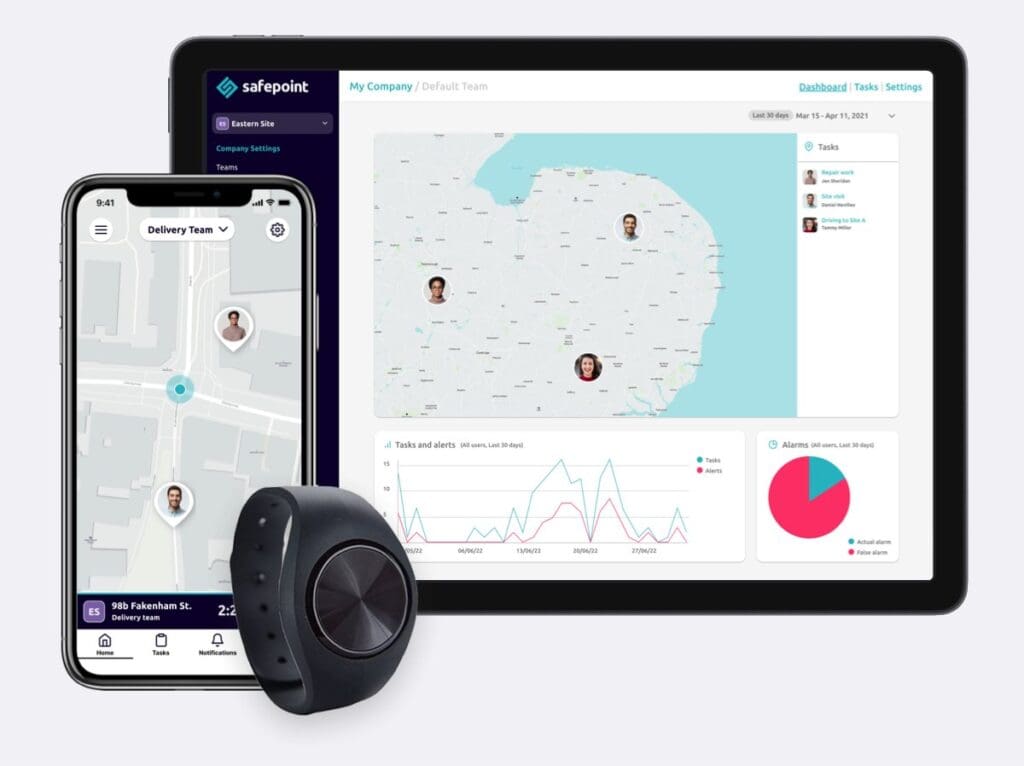
While most lone worker solutions are designed only for emergencies, Safepoint’s is designed to be an all-in-one system for keeping track of remote teams.
Supervisors, managers and team leaders can simply open the Safepoint app, and see a live map of their entire team. By tapping on various workers, those supervisors can then bring up what the user is working on and when they’ll be done.
Say that your organisation is providing a security detail for a large outdoor event (like a festival). You can pull out your Safepoint app, and see where your team are. You might see that a few of your staff members have clustered in one area, so you send them a quick message asking that they spread out.
Later, you may get a call from Safepoint’s emergency responders, saying that one of your team members has timed out and is not responding to calls. Again, you can use the Safepoint app to see which of your team is closest and ask them to go check on the situation.
These are the everyday situations in which Safepoint is providing productivity and safety improvements for security workers. To learn more, why not book in a free demo?
All sorts of businesses rely on Safepoint’s lone worker solutions and 24/7 Alarm Receiving Centre to keep their staff protected and organised. Some security organisations that use Safepoint include:



Award-winning safety management tools and a fully accredited response team.